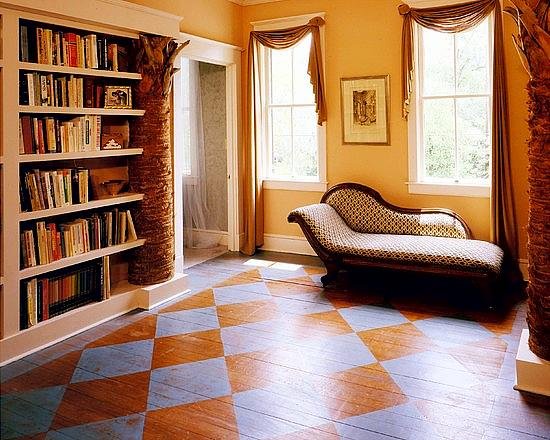In general it is best to install ceramic tile to a clean and solid subfloor material, and therefore you should try to remove the old vinyl flooring or linoleum flooring. Linoleum is a floor covering which is usually made from renewable materials such as solidified linseed oil, pine rosin, ground cork dust, wood flour, and mineral fillers such as calcium carbonate. Laying ceramic tile on top of any “soft” floor covering like linoleum is never a good idea.

Photo by Jay-Quin Contracting Inc. – Discover home design design inspiration
Warning: You should make sure the vinyl or linoleum flooring does not have any asbestos in it prior to removing it, sanding it, or roughing it up. It is recommended that you have it tested before attempting to remove it.
How to Proceed:
1. Remove the linoleum: Start in a corner of the room and remove a small piece of the linoleum. One way to remove the linoleum is to scrape off as much linoleum cement/glue as you can with a metal scraper. You can have the linoleum installed over plywood or it is possible that the linoleum was installed directly over the concrete subfloor. Vacuum up the loose materials.
NOTE: If removing linoleum is still too much to do; the last option would be to use cement boards as a base. It can be used right over the existing flooring, if you wish.
2. Cut the plywood base: If you find plywood over the concrete floor. Using a circular saw cut through the linoleum and the plywood underneath. Cut the material into 6 inch wide strips and remove it.
3. Prepare the subfloor: Fill any cracks or holes in the concrete subfloor. Make sure the surface is not even. If it is use a self-leveling concrete mix to level out the floor prior before proceeding with tile installation.
4. Ceramic tile installation: Installing ceramic tile floors is not as hard as it looks. Knowing the kind of subfloor you’ll be installing ceramic tile flooring over is important. If you prefer to install tile over plywood subfloor, be sure that the wood is at least 1 and 1/8 inches thick and is supported by an equally strong underlayment. Otherwise, your ceramic tiles will dislodge easily, or worse, break and need replacing.
Concrete floors are the most ideal subfloor surface to work with:
1) Before you start laying the tiles make sure the concrete surface is clean. For dust and other debris, sweep and then mop your concrete subfloor surface, and allow it to dry completely.
2) Smooth concrete surfaces must be rough sanded to allow the tiling mortar some grip.
3) Measure the room to determine how much material you will need. Add 5 percent to the actual square footage to account for damaged tiles or installation/cutting mistakes.
4) With a chalk line, mark a line perpendicular to the entrance of the room. Starting from the entrance lay a row of tile without adhesive along the chalk line.
5) Be sure to use spacers to maintain a uniform distance between the tiles.
6) Cut any tiles as necessary using a saw or tile cutter.
7) Apply tile adhesive to the floor in a small area using your trowel. Apply a bit to the back of each tile as well before setting it into place.
8) After the tiles are laid and the adhesive has set it is time to move on to grouting. Add grout between your tiles using your grout floater. As you work, wipe away excess grout from the tiles using a damp sponge.
9) After the grout has set you can clean off any remaining residue. Then apply a grout seal, using a paintbrush for best results.
Installing Tile over Linoleum:
Lastly, if the existing vinyl is securely fastened to the concrete slab, and the vinyl itself has limited compressibility, then you will probably be okay to install the ceramic tiles over the vinyl. The original vinyl should be removed if either one of these conditions are not met.
However, to prepare laying tile over linoleum you first need to sink 1″ to 1.5″ screws or ring nails about 6 inches apart into the Linoleum to stabilize the surface for the tile. Nails should be on 6″ centers from one another. Once you have sunk in the screws / nails into the linoleum you are ready to lay tile over linoleum. Finally, make sure you use the tile manufacturers recommended adhesive or bonding agent for securing the tile to the vinyl surface.
Yellowed Linoleum Cleaning Tips | How To Build A House (howtobuildahouseblog.com)


